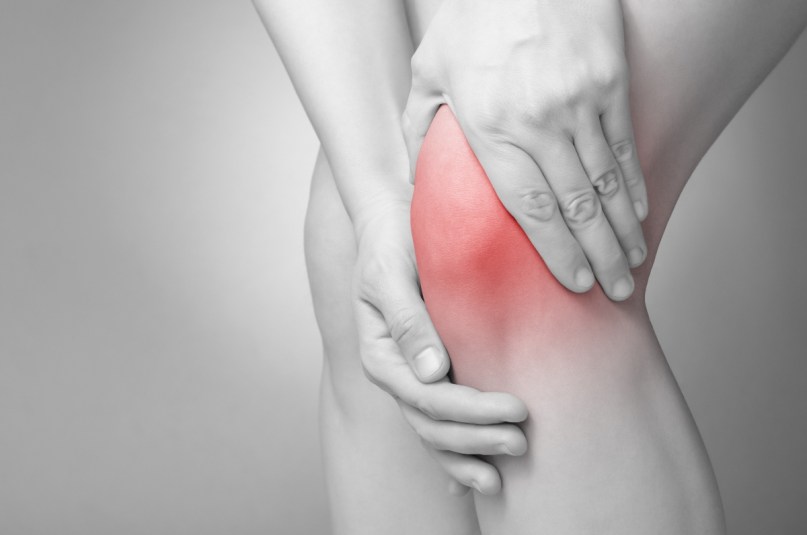Advil Can Trigger Inflammation — Try These 3 Natural Pain Cures Instead
Ease your pain without all the potential side effects.

We thought we knew the downsides of nonsteroidal anti-inflammatory drugs (NSAIDs): fatigue, indigestion, diarrhea, and increased risk of stomach ulcers. Now, studies at the University of California, San Francisco reveal the same drugs that relieve pain by easing inflammation in the short-term can actually worsen inflammation over time — and chronic inflammation is associated with everything from pain to diabetes to heart disease to stubborn fat.
How does this happen? Over time, NSAIDs break down the mucus that lines the gut, and “the mucus in the gut is like a fence, protecting good microbes and keeping bad ones out,” explains Isaac Chiu, PhD, Associate Professor of Immunobiology at Harvard Medical School. When that gut lining breaks down, toxins can travel from the gut into the bloodstream, where they circulate throughout the body and trigger inflammation. The good news? There are some natural options that may help ease your pain without all the side effects. Find three of them below.
Joint stiffness? Take a healing duo.
Supplementing with glucosamine sulfate, a compound that increases the protective cartilage that surrounds joints, can reduce joint pain, says rheumatologist Scott Zashin, MD, author of Arthritis Without Pain ($11 on Amazon). And you may be able to boost pain-relief benefits by adding chondroitin, a naturally occurring molecule in the body that builds and repairs cartilage. A study in the Annals of the Rheumatic Diseases suggested patients with moderate to severe knee osteoarthritis who took both experienced reduced pain. However, while there is certainly research demonstrating that glucosamine can aid in the treatment of osteoarthritis, more scientific evidence is still needed to prove the efficacy of the duo). A product with both glucosamine and chondroitin you can try: Vitacost Synergy Triple Strength Glucosamine & Chondroitin ($19.99 from Vitacost.com).
Back pain? Relax from head to toe.
Progressive muscle relaxation (PMR) is a deep relaxation technique. And in studies on people who practiced PMR for musculoskeletal pain, the exercise was shown to significantly reduce the discomfort of patients with chronic neck pain, and have a significant effect on the suffering, stress, and disability levels of patients with chronic low back pain. To try it, tense then relax each of your muscle groups, starting at your head and working down to your toes, for 10 seconds each. “Relaxation techniques like PMR break the stress cycle to reduce pain,” says physiatrist Saloni Sharma, MD, medical director of the Orthopaedic Integrative Health Center at Rothman Orthopaedics in Pennsylvania, and author of The Pain Solution ($15.99 on Amazon). Also smart: Take “gravity breaks” by lying down for five to 10 minutes once a day. “This takes the pressure of gravity off your spine,” she says. “It helps your body press ‘reset,’ stopping pain before it starts.”
All-body aches? Cue up curcumin.
To beat everyday soreness, look to your spice rack. “Curcumin, found in turmeric, helps offset inflammation, decreasing pain,” says Eva Selhub, MD, author of Your Health Destiny. Aim to consume ½ teaspoons of turmeric a day (in smoothies or soups) or supplement with 500 mg. of curcumin three times a day. In studies reviewed in the journal BMJ Open Sport & Exercise Medicine, the therapeutic effect of curcumin and turmeric was found to be as effective as NSAIDs at easing knee pain. “It helps muscles recover from stress,” adds Dr. Zashin, who also recommends the herb Boswellia to ease soreness. Indeed, a study published in Seminars in Arthritis and Rheumatism found curcumin and Boswellia work together to tame inflammation and pain. Try: Terry Naturally CuraMed Acute Pain Relief ($41 from iHerb.com).
This content is not a substitute for professional medical advice or diagnosis. Always consult your physician before pursuing any treatment plan.
This article originally appeared in our print magazine, First For Women.
















